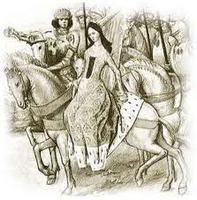 And last one, Joan of the Tower, who was born in 1321 and was married to David II of Scotland.
Although she gave birth to four children, the king, who was regarded as bisexual, was disreputable for expressing sexual attention to male favourites, and this include Hugh le Despenser the younger and Piers Gaveston. She hated Despenser and she begged her husband to expel Despenser while she was pregnant with her youngest child. After Despenser, the king had an affair with Roger Mortimer, who was married to Joan de Geneville, a rich heiress.
When King Charles IV of France, Isabella’ brother, sequestered Edward’s French wealth, she went home to France as a delegate of the King who was charged for discussing a peace treaty between the two countries. Her presence also became a central issue for the nobles who are against the reign of Edward. She then assembled an army to fight Edward, and he asked the help of Roger Mortimer, the 1st of Earl of March, to do this. Edward learned of her treachery and he demanded that Isabella must return to England.
Moreover, the plan of Isabella and Mortimer became successful. The allies of King Edward left him without engaging in battle and he was captured. He was also forced to resign in favour Edward III of England, his eldest son.
Before she died on 22 August 1358, she took the habit of the Poor Clares. Her body was buried at the Franciscan church at Newgate in London.
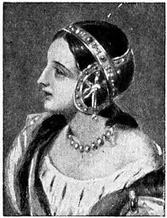 Name: Isabella of France
Date of Birth: c. 1295
Place of Birth: Paris, France
Isabella of France was born in Paris, France on an undetermined date which was estimated to be possibly between May and November 1295. Her parents were King Philip IV of France and Queen Joan I of Navarre.
Isabella was promised in marriage by her father to King Edward II of England while she was still a child. The goal of this pre-arranged wedding was to put an end to the conflicts between England and France. This misunderstanding evolved because of France’s continental entitlement of Gascony and its territorial claims to Anjou, Aquitaine, and Normandy. Pope Boniface VIII had planned that the marriage should take place as early as 1928; however, it was postponed due issues regarding the conditions of the marriage contract. Edward I, the English king, also tried to breach the engagement a couple of times. The wedding went on in 1307 after his death.
She was about 12 years old at the time of her marriage. She was described by Geoffrey of Paris as "the beauty of beauties... in the kingdom if not in all Europe."
Their marriage resulted to the birth of four children. She also said to have suffered from a miscarriage. Their children were Edward III of Windsor, who was born in 1312, John of Eltham, Earl of Cornwall, who was born in 1316, Eleanor of Woodstock, who was born in 1318 and was married to Reinoud II of Guelders.
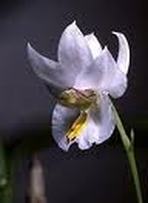 _Unfortunately, he turned the offer down; for he opted to work and care for the nursery he set up outside of Brussels. It was also in this nursery, where he was able to grow and nurture plants that were to be exported in Europe.
In so doing, Galeotti also took the time and the effort to work with Martin Martens, a botanist, regarding the different techniques used in scientific study. 1853 marked another milestone in his life, when he was made as the director of the Botanical Garden of Brussels.
Galeotti’s increasing fame was further heightened by several recognitions. Due to the impressive knowledge he had, Galeotti was able to gain the respect of the people. He became the editor for the Journal d’Horticulture Pratique in 1852, and in 1897, he produced the Bulletin de la Societe Royal d’Horticulture de Belgique et du Jardin botanique de Bruxelles.
Galeotti died in 1858, with reasons undisclosed to the public. Since Galeotti’s work was well renowned all over the world, the Mexican herbarium he formed while he was still alive came in the interest of the growing public. In 1858, the Jardin botanique de Bruxelles (Botanical Garden of Brussels) bought the said herbarium from Galeotti’s wife and widow.
As proof of his legendary contribution to the field of Botany, Henri Guillaume Galeotti’s family name was used in naming plants. The term Galeottia, a genus in the Orchidaceae family, is currently used in his honour.
 _Name: Henri Guillaume Galeotti
Date of Birth: 10 September 1814
Place of Birth: Paris, France
Henri Guillaume Galeotti was born in Paris, France on 10 September 1814. He was regarded to be of French and Belgian origins. Although he was born in France, Henri Guillaume Galeotti’s parents were Italian. As a geologist and botanist, his studies and researches were focused on the Cactaceae family.
Galeotti studied at the Etablissement Geographique de Bruxelles, and graduated in 1835. In the said institution, he gave much time and effort in studying natural history and geology. Galeotti’s hard work and determination brought about recognitions in his dissertation regarding the Brabant geology.
After graduating from college, Galeotti spent the next five years of his life conducting studies and researches in Mexico. Since his specialisation was the Cactaceae family, he focused his studies on the different cacti.
At the prime of his life, Galeotti was able to produce several accomplishments that helped him in his quest for further education. While in Mexico in August 1838, Galeotti and his group of botanists were able to set boundaries and make records, as he was able to produce the earliest recorded rise of the Pico de Orizaba.
Moreover, his impressive skills and knowledge did not fail to catch the attention of the many. In 1840, the University of Brussels offered Galeotti the opportunity to be a Botany instructor in their institution.
 _Excited to meet new people, he performed in a number of contests like ‘Euro Bass Day 2003, which was held in Verona. He was declared the winner of this competition. He also joined the ‘Haut les Basses’ contest in 2004. Before 2004 ended, Feraud began composing music for his maiden solo masterpiece as he played in different jams and clubs in Paris. Back in 2005, Feraud was invited by John McLaughlin to collaborate with him on two tracks (‘For Jaco’ and ‘Senor CS’) included in his album ‘Industrial Zen’. This encounter was crucial for Hadrien. He finished his debut solo album ‘Hadrien Feraud’ in 2006. It was graced by several prestigious guests like John McLaughlin, Flavio Boltro, Bireli Lagrene, Jean-Marie Ecay, Marc Berthoumieux, Jean-Pierre Como, Jim Grancamp, Mokhtar Samba, Dominique di Piazza, Jon Grancamp, Thierry Eliez, and Linley Marthe. In 2007 he contributed to Chick Corea's trio project. After his first solo album, he toured in Canada and North America. It was followed by a European tour in 2008. He was then a member of 4th dimension (together with Mark Mondesir on drums and Gary Husband on keys) and John McLaughlin. Ken Smith and Hadrien Feraud announced ‘Hadrien Feraud Signature Burner’ in last September. It was to be created in Japan. Hajime Hirose and SleekElite will be responsible for its creation. Ken Smith will be the director. Hand-made models of this are set for release early in 2010.
 _Name: Hadrien Feraud Date of Birth: 16 August 1984 Place of Birth: Paris, France Hadrien Feraud is a known French Jazz fusion-bassist. His family is very much into music. Originally, Feraud’s inclination was towards playing the drums. But after hearing Jaco Pastorius’ The Birthday Concert, which was a gift from his dad when he was 12, he decided to pursue playing the electric bass. Amazed by Jaco’s musical work, he joined the ranks of youngest and greatest bass players in France in a decade. His musical universe expanded through occasional collaborations. Studying/listening to the works of other musicians and bassist like Christian McBride, Anthony Jackson, Victor Bailey, Skulli Sverisson, Matthew Garrison Gary Willis, Linley Marthe and Richard Bona helped him hone his craft. Up to now, his primary inspirations are the complete musical compositions of Jaco Pastorius and Weather Report. Christian Pegand (the concert manager of Bireli Lagrenes and John McLaughlin) asked Feraud back in 2001 to participate in the ‘bass contre bass’ concert. Playing with Sylvain Luc and Bireli Lagrene on guitars and Frank Agulhon on drums, Feraud created a notable impact. His genuine talent was recognised by Lagrene. In Feraud met Strasbourg’s Jim and Jon Grancamp through Bireli Lagrene in 2002. Jim Feraud (bass), Jim (guitars), and Jon (drums) established a power-trio named ‘Le Cartel’. They played on different stages in the capital of France, around France, and overseas.
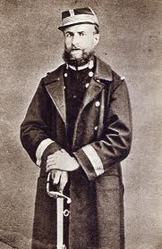 __When he was in Paris, he dedicated his time to the ‘red republicanism’ cause, and began composing articles for the weekly newspaper, ‘La Marseillaise’. Eventually, because of his failure to stage a revolt on 7 February 1870 at Belleville, Flourens was forced to run away from France. On Napoleon’s downfall, he returned to Paris after a short been living in Italy and placed himself as the head of a group of 500 tirailleurs, or sharpshooters. Due to his revolutionary ways, being one of the instigators of the 31 October 1870 uprising against the moderate policy of the provisional government, he was imprisoned at Créteil, nearby Vincennes, ordered by the provisional government, and detained on 7 December 1870 at Mazas, but was discharged by his team on the evening of 21 to 22 January. He joined the uprising of the population on 18 March, was appointed by the XXe arrondissement to be a member of the revolutionary Commune, and was chosen to be general. Gustave Flourens was among the most functional insurrection leaders, and after a raid against the troops of Versailles on 3 April, he escaped into an inn close to the bridge that divides Chatou and Rueil. After he was seized in that area and was neutralised by the Gendarmerie, Captain Jean-Marc Démaret murdered him. Apart from his 1869 Science de l'homme, Flourens also authored several fugitive pamphlets.
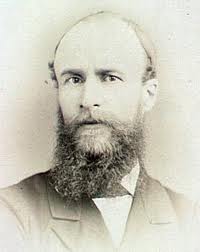 _Name: Gustave Flourens Date of Birth: 4 August 1838 Place of Birth: Paris, France Gustave Flourens, born on 4 August 1838, was a leader and writer during the French Revolution, and physiologist Jean Pierre Flourens’ son. Gustave Flouren’s father was the Collège de France’s Professor and was a deputy from 1838 to 1839. In addition, Gustave was the elder brother of Emile Flourens, the foreign affairs minister under the Third Republic. In 1863, the 25-year-old Flourens undertook, on his father’s behalf, a series of teaching classes at the Collège de France, on the topic of mankind’s history. His theories regarding the human race’s manifold origin offended the clergy, and he was banned from presenting further lectures. Then, he travelled towards Brussels, where he printed his lectures using the heading of Histoire de l’homme in 1863. Afterwards, Gustave Flourens visited Athens and Constantinople and participated in the 1866-1868 Cretan insurrection; he was among the chosen to undergo a complicated mission to Athens for the Cretan Revolutionary Assembly. He tried convincing the enlightened people, like Victor Hugo, who failed to gain entrance to the Académie Française because Flourens was chosen instead of him, to defend the Cretan insurrection. He then stayed in Italy for a while, where an article he wrote in the Fe polo d'Italia triggered his being arrested and cast into prison, and having come home to France finally, nearly died in a duel with the Pays’ editor, Paul de Cassagnac.
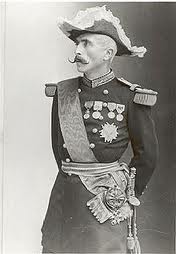 _He was reputed for severity during the Paris Commune’s suppression and became the subject of continuous attacks by the chamber of deputies and the press. In 1872, he went back to Algeria and commanded the Batna subdivision in the campaign against El Golea, overcoming the difficulties of marching across the desert and causing severe punishment to the revolted tribes.
In 1875, Gallifet was promoted to general, and led the 15th infantry division in Dijon, the army corps in Tours, and the army corps in Limoges in 1882. After becoming a member of the Conseil Supérieur de la Guerre in 1885, he carried out the manoeuvres of the cavalry in the following years and earned the reputation as an army commander.
In 1880, he was decorated by Léon Gambetta as the Grand Officer of the Légion d’Honneur and was later nominated to be the governor of Paris. He also received the Grand Cross of the Légion d’Honneur in 1887 and was given the Military Medal in 1891. He retired from active duty after he led cavalry manoeuvres in 1894.
Galliffet was appointed as war minister on 22 June 1899 and played a significant role in French politics, distinguishing himself for his firmness in dealing with cases of conflict in the army. He retired on 29 May 1900 and died at the age of 79 on 8 July 1909.
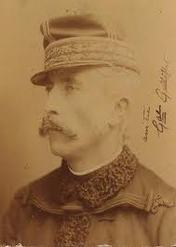 _Name: Gaston Alexandre Auguste, Marquis de Galliffet
Date of Birth: 23 January 1830
Place of Birth: Paris, France
Gaston Alexandre Auguste, Marquis de Galliffet was a French general who was born on 23 January 1830 in Paris, France.
In 1848, Gaston Galliffet went into the army, and was promoted to sub-lieutenant in 1853. He had served with distinction during the Siege of Sevastopol in 1855, the Austro-Sardinian War in 1859, and in Algeria in 1860. He later served on emperor Napoleon III’s personal staff for some time.
During the siege of Puebla in Mexico in 1863, he showed great courage but was wounded severely. He went back to France to recuperate from his wounds and was assigned the task of handing the captured colours and standards to the emperor. In 1864, he returned to Algeria and participated in the expeditions against the Arabs. He then went back to Mexico as a lieutenant-colonel and became a colonel of the third Chasseurs d’Afrique in 1867.
Galliffet led the Army of the Rhine during the Franco-Prussian War in 1870-1871, until he was also promoted to brigadier general on 30 August. During the battle of Sedan, he commanded the brigade of Chausseirs d’Afrique in attacking the cavalry division of General Margueritte. Later, he went back to France when Paris was being sieged by the French Army of Versailles. He led a brigade at the time of the repression of the Paris Commune in 1871, making him among the most criticised figures in France.
|










 RSS Feed
RSS Feed